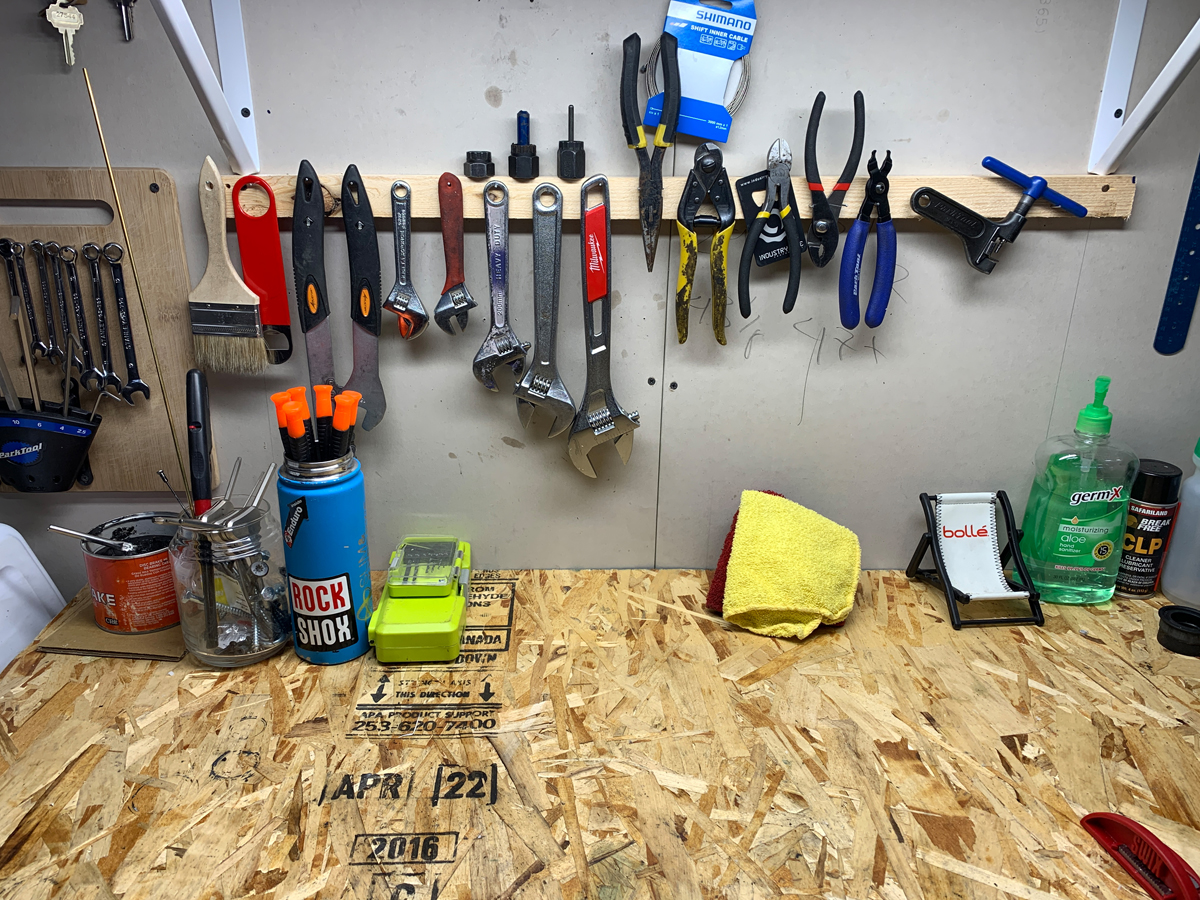Home Bike Repair
If you’re like I am, you might literally be going crazy if you are subject to the self-isolation provisions to reduce the spread of the COVID-19 novel coronavirus. Some people are riding their bikes; either inside or solo outside. Others are not. Regardless, for me, part of the whole experience is spending time with the machine that brings us so much joy. I enjoy working with my hands; thus, working on bikes is nearly as therapeutic as riding them.
It Is Not Only About the Tools
Sometimes, I’ll go out to the garage and just pull something off the bike. Handle it. Clean it. Get really familiar with it. The more time you spend with your bike, the more you realize it will eventually need replacement parts. Spare parts are just as important as tools; sometimes even more so.

Tools are essentially just paperweights if the repair actually calls for replacement. For example, worn cassettes generally cannot be repaired.
Building a home bicycle repair workshop assumes two things:
- You actually know how to use the tools on your workbench; and
- You have the spare parts you need to make those tools useful.
Don’t worry about trying to replicate your local shop’s repair area. Not everyone is going to have a liter of Shimano Mineral Oil on the shelf or an assortment of every possible disc brake pad and chain on the market. It’s your home workshop, so keep it simple. Make sure you have the most important spare parts on hand to keep your bike on the road (or trail).
Organization – What Do You Need?
Don’t rush off to your local bike shop and buy all the tires that fit your bike. Most of the time you’ll replace one or two tires a season. It will be helpful for you to have a spare chain and master-links, a couple of tubes, tire sealant, and maybe some cables and housing for your derailleur or dropper post.
Another thing to keep in mind: some of this stuff does not necessarily need to be new.
To save a ride, you often just need a part that isn’t completely worn out. Grips or pedals, for example. Or tires. In an effort to reduce waste, see if you can use something that you already have.
Keep your spare parts organized. The first step is to round up all your spare tubes, deflate and roll them, and bind them with a rubber band. I still have 26” tubes kicking around; I know this because they’re all organized. Do the same with tires. Get a bin or box for them. Clunky, big and awkward, tires have no place on a workbench. Better stash them underneath. Chains, brake pads, cables, and such, go well on the wall or in a drawer.
As you organize, look at your bike and make note of replacement parts you may need. This will vary widely between a home bike mechanic’s skillset and their bike. Getting ahead of required parts before the season really kicks off will save countless rides. So, go buy a spare tire and a chain; maybe add some grips or bar-tape. If you’re a little more confident in your skills, add brake pads, cables, and housing.
The Pay-off
Have you ever attempted back-to-back rides, only to be thwarted by a torn sidewall and a 3 hour wait for a tire change at the shop? Or an evening ride Friday night with smoked brake pads and an early Saturday ride? If you had a spare tire and extra brake pads on hand, a stop at the house and you’re riding anew.
Having the spare parts you need at home is perfectly prudent, and for me as a mechanic, it’s requisite. However, it’s even more critical when getting ready to hit the road for a bike trip. Being stocked at home makes packing for a trip way easier and immeasurably quicker.
With social-distancing protocols and limited access to businesses—bike shops are considered essential services here in Utah, but that’s not true nationwide—our whole approach to riding and getting our bikes working really does call for us to have more of a grasp on how our bikes actually work, and how to address the most common problems. Knowing that you can replace your tire, your chain, or that rancid smelling bar-tape without needing to leave your garage could really be helpful.
Don’t forget to support your local bike shop. They’ll be there for you when you really screw something up – or really want to avoid screwing something up. They should also have the spare parts you need, so that you can stock your home workshop as well.
Sidebar:
Essential Bike Parts to Have on Hand
- Tire(s)
- Chain
- 2 spare master-links
- Tire sealant
- Brake pads (disc or otherwise)
- Bar-tape or Grips
- Back-up pedals (plastic platforms $10)
Eric Ramirez has about 20 years experience working on bikes, starting in Park City. Today he’s a head technician at a shop.

